Introduction to Forex Trading: A Beginner’s Guide
When it comes to financial markets, nothing quite compares to the Forex market. The foreign exchange market, or Forex, is where currencies from all over the world are traded, and it operates 24 hours a day, five days a week. For those new to investing, Forex can seem intimidating. However, once you understand the basics, it becomes clear why this is one of the most exciting and accessible markets for both novice and experienced traders alike.
What is Forex Trading?
In its simplest form, Forex trading is the act of buying one currency while simultaneously selling another. These transactions occur in currency pairs, such as the Euro against the US Dollar (EUR/USD) or the British Pound against the Japanese Yen (GBP/JPY). The aim is to profit from fluctuations in exchange rates by anticipating whether one currency will strengthen or weaken against the other.
How the Forex Market Works
Forex trading occurs in a global decentralized market, which means there isn’t a central exchange like the New York Stock Exchange. Instead, trading is conducted electronically via over-the-counter (OTC) transactions. Banks, corporations, governments, and retail traders all participate in this vast market, making it the largest financial market in the world, with a daily trading volume exceeding $6 trillion.
Why is Forex Trading So Popular?
There are a few reasons why Forex is such an attractive option for investors:
- Liquidity: The sheer volume of daily trades makes the market highly liquid, meaning you can easily enter and exit positions.
- Low Barriers to Entry: Thanks to leverage, traders can control large positions with a relatively small investment, although it’s important to manage risk.
- Flexibility: Forex trading can be done 24 hours a day, so it can fit into any schedule, whether you’re a full-time trader or just trading in your spare time.
For beginners, the world of Forex may seem overwhelming, but with the right education and tools, it offers endless opportunities. Whether you want to trade part-time or aim to become a professional, Forex offers a dynamic and potentially rewarding journey.
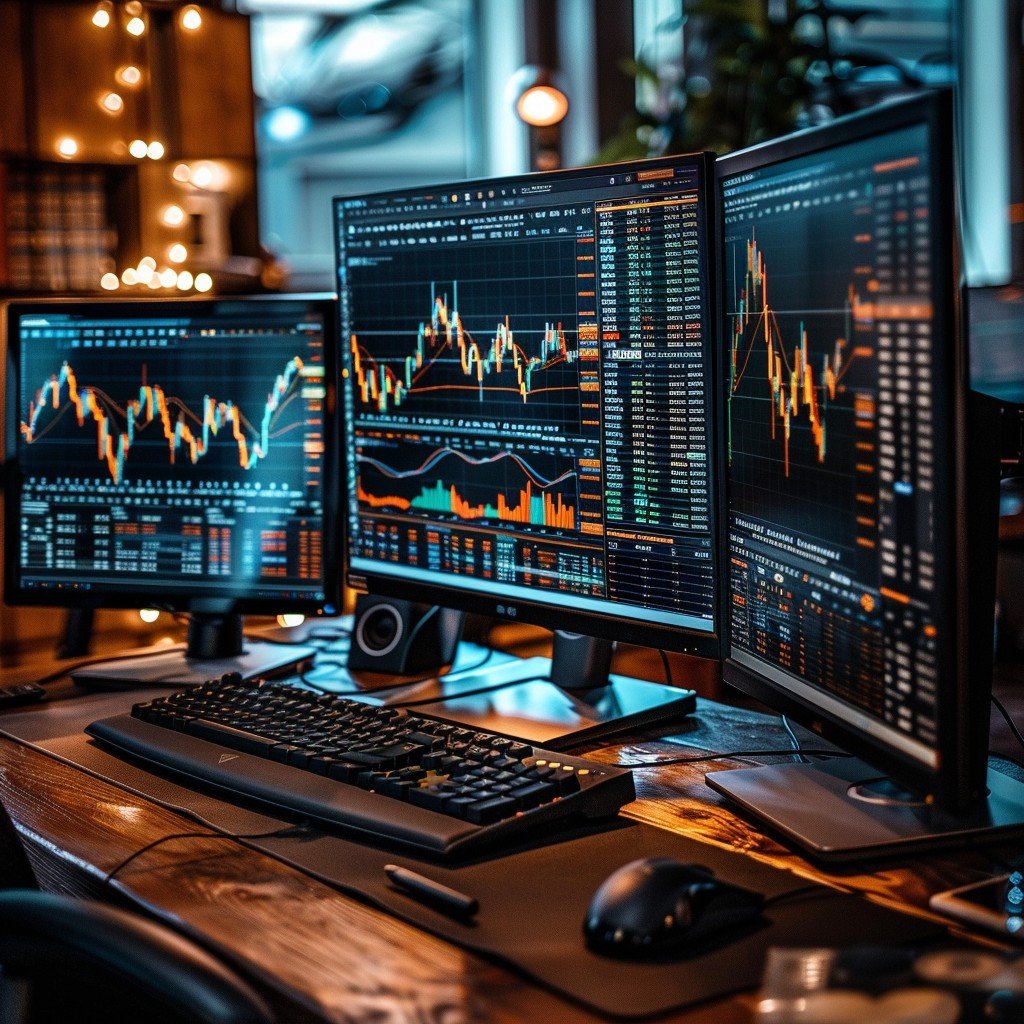
Understanding Currency Pairs: The Basics You Need to Know
If you’re stepping into the world of Forex, the first concept you need to wrap your head around is currency pairs. After all, the entire market revolves around trading one currency for another. Understanding currency pairs is the foundation of every trade you’ll make, and I’ll break it down for you here.
What Are Currency Pairs?
In Forex, currencies are quoted in pairs because you are always exchanging one currency for another. The first currency listed is known as the base currency, and the second is the quote currency. For example, in the pair EUR/USD, the Euro is the base currency, and the US Dollar is the quote currency. The price of the pair tells you how much of the quote currency you need to purchase one unit of the base currency.
Types of Currency Pairs: Major, Minor, and Exotic
- Major Pairs: These are the most traded pairs in the world and always include the US Dollar, such as EUR/USD or USD/JPY. They offer high liquidity and lower spreads, making them ideal for beginners.
- Minor Pairs: These pairs do not include the US Dollar but are still commonly traded, such as EUR/GBP or AUD/NZD. While they are slightly less liquid than the majors, they can still offer good trading opportunities.
- Exotic Pairs: These involve one major currency paired with a less commonly traded currency, such as USD/TRY (US Dollar vs. Turkish Lira). Exotic pairs can be more volatile and have wider spreads, so they’re often better suited for more experienced traders.
How to Read a Currency Quote
The price of a currency pair reflects how much of the quote currency you need to buy one unit of the base currency. For example, if EUR/USD is quoted at 1.1800, it means it costs 1.18 USD to buy 1 EUR. If the quote increases to 1.1850, the Euro has strengthened against the Dollar, and you would need more Dollars to buy one Euro.
Understanding currency pairs is the first step toward mastering Forex trading. Once you’ve got a solid grasp of how pairs work, you’re well on your way to making informed trading decisions.

Forex Trading Platforms: MT4, MT5, and TradingView Explained
Choosing the right trading platform is crucial for any trader, especially when you’re just starting out. The platform is your gateway to the market, and it needs to be both functional and easy to use. Let me introduce you to three of the most popular platforms in the Forex world: MT4, MT5, and TradingView.
MetaTrader 4 (MT4): The Veteran of Forex Trading
MT4 has been around for over 15 years and remains the most widely used trading platform in the world. Its popularity stems from its simplicity and the wide array of tools available to traders. MT4 offers:
- Customizable Charts: You can analyze price action with different chart types and timeframes.
- Expert Advisors (EAs): Automated trading is one of MT4’s standout features, allowing you to run algorithms based on your strategies.
- User-Friendly Interface: Even if you’re a beginner, you’ll find MT4 easy to navigate.
MetaTrader 5 (MT5): The Next Generation
MT5 is the upgraded version of MT4, with additional features and enhanced functionalities. While MT5 was originally designed for stocks and commodities, it has quickly become a favorite among Forex traders who want more flexibility. MT5 offers:
- More Timeframes: MT5 gives you access to 21 different timeframes, compared to MT4’s 9.
- Improved Charting Tools: Advanced tools allow for more detailed market analysis.
- Integrated Economic Calendar: Keep track of important news and events directly within the platform.
TradingView: The Chartist’s Dream
While not a traditional Forex trading platform, TradingView is one of the most popular charting tools in the world. It offers:
- Incredible Charting Capabilities: With TradingView, you can access a wide range of technical indicators, drawing tools, and chart styles.
- Social Features: TradingView has a large community of traders, and you can follow their analyses, share ideas, and even post your own.
- Broker Integration: Many brokers now allow you to trade directly from TradingView, making it a versatile tool for serious traders.
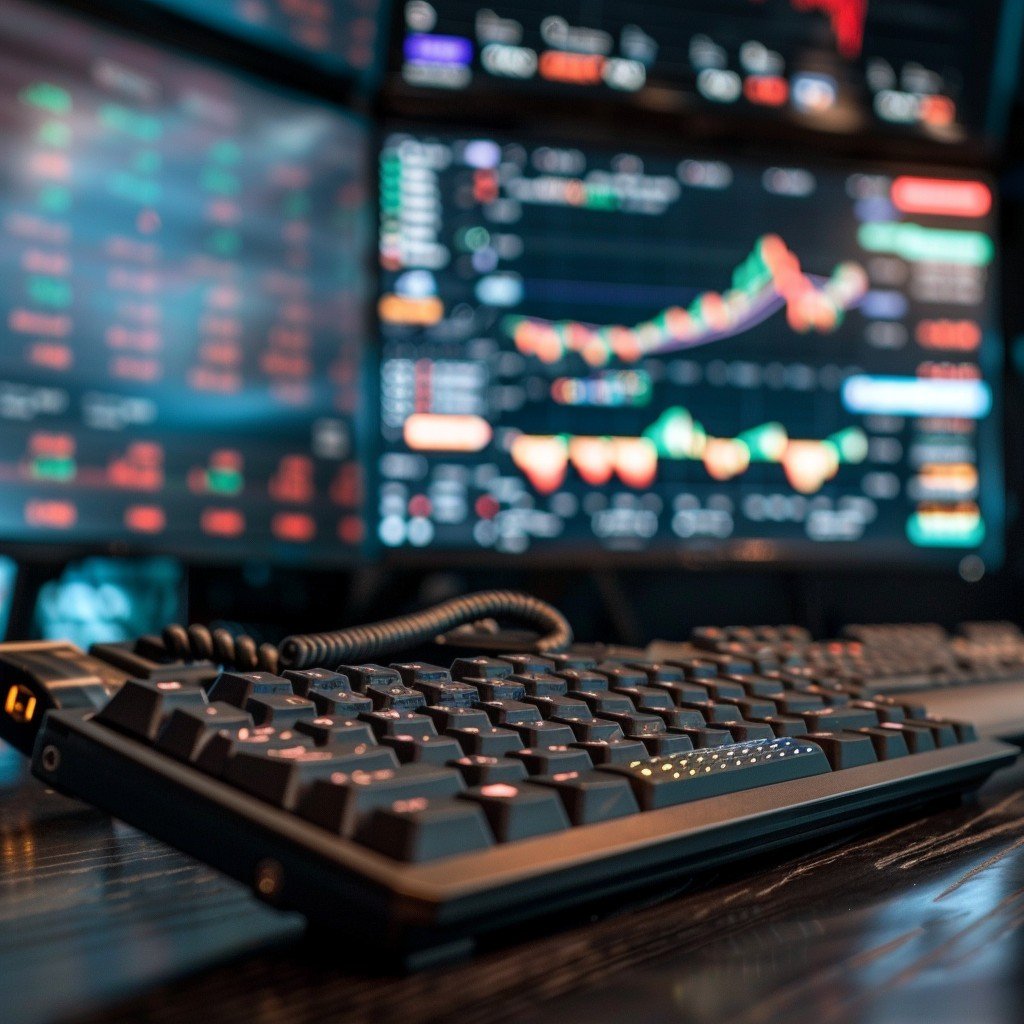
How to Choose the Right Forex Broker
Selecting the right Forex broker is one of the most crucial decisions you’ll make as a trader. Your broker acts as your gateway to the Forex market, so it’s essential to choose one that aligns with your trading needs and goals. With countless options available, how do you make the right choice? Let me guide you through the process.
1. Regulation and Security
Your first priority should be ensuring that the broker is properly regulated. Regulatory bodies, such as the FCA (UK), ASIC (Australia), and NFA (US), impose strict rules to protect traders and ensure transparency. A regulated broker means your funds are held in segregated accounts and are protected in case of broker insolvency. Never compromise on regulation—this is your safeguard against fraud.
2. Trading Costs: Spreads and Commissions
Every time you trade, you’ll encounter costs in the form of spreads or commissions. The spread is the difference between the buy and sell price, and brokers either offer fixed or variable spreads. Some brokers charge a commission per trade in addition to spreads. It’s important to compare these costs across different brokers, as they can significantly impact your profitability over time.
3. Trading Platform and Tools
A good broker will offer a reliable and user-friendly trading platform, such as MetaTrader 4 (MT4), MetaTrader 5 (MT5), or cTrader. Look for a platform that provides robust charting tools, technical indicators, and fast execution. Additionally, some brokers offer advanced tools like trading signals, automated trading (EAs), and mobile apps for trading on the go.
4. Account Types and Leverage
Different brokers offer various account types to cater to different traders. Whether you’re a beginner or an experienced trader, you should find an account that suits your capital and trading style. Consider the leverage offered, but use it cautiously. Higher leverage can amplify your profits but also your losses, so make sure the broker’s leverage aligns with your risk tolerance.
5. Deposit and Withdrawal Options
Check the broker’s deposit and withdrawal methods and fees. A good broker should offer a variety of convenient options, such as bank transfers, credit cards, and e-wallets like PayPal or Skrill. Make sure the process is straightforward, with reasonable processing times and low fees.
6. Customer Support
Reliable customer support is vital, especially when you’re dealing with a fast-moving market like Forex. Choose a broker that offers 24/5 support through various channels, such as live chat, email, or phone. Test their support before committing, as you’ll want quick and helpful responses when you need assistance.
By carefully evaluating these factors, you’ll be able to choose a Forex broker that not only fits your needs but also provides a safe and supportive trading environment.

Market Orders Explained: How to Place Your First Trade
As you dive into Forex trading, one of the first things you’ll need to understand is how to place a trade. This involves selecting the right type of market order to execute your strategy. Let’s break down the most common types of market orders and how to use them effectively.
1. Market Order: The Immediate Execution
A market order is the simplest and most common type of order. When you place a market order, you’re instructing your broker to buy or sell a currency pair immediately at the best available price. This type of order is ideal for entering or exiting trades quickly when you want to capitalize on market movements.
- Buy Market Order: This order buys a currency pair at the current ask price.
- Sell Market Order: This order sells a currency pair at the current bid price.
2. Limit Order: Controlling Your Entry and Exit
A limit order allows you to buy or sell a currency pair at a specific price or better. This type of order gives you control over the price at which your order is executed but doesn’t guarantee that the order will be filled if the market doesn’t reach your specified price.
- Buy Limit Order: This order is placed below the current market price, instructing the broker to buy when the price reaches the limit.
- Sell Limit Order: This order is placed above the current market price, instructing the broker to sell when the price reaches the limit.
3. Stop Order: Triggering Your Trade at the Right Moment
A stop order is used to buy or sell a currency pair once it reaches a specified price, known as the stop price. Once the stop price is reached, the stop order becomes a market order and is executed at the best available price.
- Buy Stop Order: This order is placed above the current market price, instructing the broker to buy when the price reaches the stop level.
- Sell Stop Order: This order is placed below the current market price, instructing the broker to sell when the price reaches the stop level.
4. Stop-Loss and Take-Profit Orders: Managing Risk and Securing Profits
- Stop-Loss Order: A stop-loss order is designed to limit your losses on a trade by automatically closing the position when the market moves against you. For example, if you’re long on EUR/USD at 1.1800, you might set a stop-loss order at 1.1750 to cap your potential loss.
- Take-Profit Order: A take-profit order works similarly but in the opposite direction. It automatically closes your position when the market hits a specified profit level. For instance, if you’re long on EUR/USD at 1.1800, you might set a take-profit order at 1.1850 to lock in your gains.
Understanding these market orders is essential for executing trades that align with your strategy and managing risk effectively. Whether you’re aiming for quick market entry or setting up conditions for a future trade, knowing how to use these orders will give you greater control over your trading outcomes.

The Importance of Risk Management in Forex Trading
If there’s one golden rule in Forex trading, it’s this: protect your capital. No matter how skilled or experienced you are, risk management is the foundation of long-term trading success. Let’s explore why risk management is so critical and how you can implement effective strategies to safeguard your trading account.
Why is Risk Management So Crucial?
Forex trading can be highly rewarding, but it’s also inherently risky. Currency markets are volatile, and prices can swing dramatically due to economic news, geopolitical events, or unexpected market sentiment shifts. Without proper risk management, even a few bad trades can lead to significant losses, potentially wiping out your trading account.
1. Setting Stop-Loss Orders: Your Safety Net
A stop-loss order is a vital tool for limiting your potential losses on a trade. By setting a stop-loss, you instruct your broker to automatically close your position if the market moves against you by a specified amount. This prevents you from letting losses run out of control, which can happen when emotions take over.
2. Using Take-Profit Orders: Locking in Gains
Take-profit orders are the flip side of stop-losses. They automatically close your position when the market reaches a certain profit level. This helps you secure profits without getting greedy or letting winning trades turn into losers due to market reversals.
3. The 1% Rule: Limiting Risk per Trade
One of the most popular risk management strategies is the 1% rule, which suggests that you should never risk more than 1% of your trading capital on a single trade. This means if your account balance is $10,000, your maximum risk per trade should be $100. By adhering to this rule, you can withstand a series of losing trades without severely impacting your overall capital.
4. Diversifying Your Trades: Don’t Put All Your Eggs in One Basket
Diversification is a well-known investment principle that also applies to Forex trading. By spreading your risk across different currency pairs, you reduce the impact of any single trade on your overall portfolio. Avoid overexposing yourself to one currency or market condition, as this can amplify your risk.
5. Managing Leverage: A Double-Edged Sword
Leverage allows you to control a larger position with a smaller amount of capital, but it also increases your exposure to risk. While leverage can amplify your profits, it can just as easily magnify your losses. Use leverage cautiously, and always be aware of the potential downside before entering a trade.
6. Keeping Emotions in Check: The Psychological Aspect of Risk Management
Risk management isn’t just about numbers; it’s also about controlling your emotions. Fear and greed are powerful forces that can lead to poor decision-making and impulsive trading. By having a solid risk management plan in place, you can trade with discipline and confidence, knowing that your risk is under control.
In conclusion, risk management is not optional—it’s essential. By incorporating these strategies into your trading routine, you can protect your capital, minimize losses, and set yourself up for long-term success in the Forex market.

What Are Pips, Lots, and Leverage in Forex Trading?
As you embark on your Forex trading journey, you’ll quickly encounter terms like pips, lots, and leverage. These concepts are fundamental to understanding how Forex trading works and how you can manage your trades effectively. Let’s break them down.
Pips: The Smallest Price Movement
A pip, short for “percentage in point,” is the smallest price movement in the Forex market. Most currency pairs are quoted to four decimal places, and a pip represents a one-unit change in the fourth decimal place. For example, if EUR/USD moves from 1.1800 to 1.1801, that’s a movement of one pip.
Understanding pips is crucial because they are the unit of measurement used to calculate your profit or loss on a trade. When you see a currency pair quoted with a spread, the difference between the bid and ask prices is often expressed in pips.
Lots: The Size of Your Trade
In Forex, trades are typically executed in specific quantities known as lots. A standard lot represents 100,000 units of the base currency. However, not every trader wants to trade such large amounts, so brokers offer smaller lot sizes:
- Standard Lot: 100,000 units of the base currency.
- Mini Lot: 10,000 units of the base currency.
- Micro Lot: 1,000 units of the base currency.
For instance, if you’re trading a mini lot of EUR/USD, you’re trading 10,000 Euros against the US Dollar. The lot size you choose will affect the value of each pip, which in turn influences the potential profit or loss of your trade.
Leverage: Amplifying Your Trading Power
Leverage is one of the most attractive features of Forex trading, as it allows you to control a large position with a relatively small amount of capital. Leverage is expressed as a ratio, such as 100:1, which means you can control $100,000 with just $1,000 of your own money.
While leverage can significantly amplify your profits, it also increases your risk. A small market movement against your position can lead to substantial losses, so it’s important to use leverage wisely and understand its impact on your trading.
Calculating Profit and Loss
To calculate your profit or loss on a Forex trade, you need to know the number of pips the market moved, your lot size, and the value of each pip. For example, if you’re trading a standard lot of EUR/USD and the market moves 50 pips in your favor, your profit would be calculated as:
Profit=50 pips×$10/pip=$500\text{Profit} = 50 \text{ pips} \times \$10/\text{pip} = \$500Profit=50 pips×$10/pip=$500
On the other hand, if the market moves against you by 50 pips, your loss would be $500.
Conclusion
Mastering the concepts of pips, lots, and leverage is essential for any Forex trader. They form the basis of trade sizing, risk management, and profit calculation. By understanding how they work, you can make informed decisions, manage your risk effectively, and set yourself up for successful trading.

Mastering Forex Market Hours and Trading Sessions
The Forex market operates 24 hours a day, five days a week, making it one of the most dynamic and exciting markets to trade. However, not all hours are created equal. Understanding the different Forex trading sessions and how they impact market volatility is key to developing a successful trading strategy.
1. The Four Major Trading Sessions
The Forex market is divided into four major trading sessions based on the world’s financial centers:
- Sydney Session: This session opens the Forex trading week and is generally quieter. It’s often considered a good time for traders who prefer less volatility.
- Tokyo Session: Also known as the Asian session, this period sees moderate volatility. It’s characterized by movements in currency pairs involving the Japanese Yen, such as USD/JPY and EUR/JPY.
- London Session: The London session is the most active, as it overlaps with both the Tokyo and New York sessions. This period sees the highest volume of trading and is often considered the best time to trade major currency pairs like EUR/USD, GBP/USD, and USD/CHF.
- New York Session: The New York session is the second most active session and overlaps with the London session for a few hours, leading to significant volatility. This is a prime time for trading USD-based pairs.
2. Understanding Market Overlaps
The most volatile periods in Forex trading are during the overlaps between major sessions. The London-New York overlap, for example, is when the market sees the highest volume and the most significant price movements. Traders can capitalize on these overlaps by trading pairs that are most active during these times.
3. Best Times to Trade
While the Forex market is open 24/5, not all hours are equally suitable for trading. The best times to trade are during periods of high liquidity and volatility, such as:
- London Session: Ideal for trading major pairs with high volume.
- London-New York Overlap: Offers the best trading opportunities due to heightened activity.
- Tokyo-London Overlap: Although less volatile than the London-New York overlap, it still provides good trading conditions, especially for JPY pairs.
4. Adapting to Market Conditions
Different sessions can exhibit different market behaviors. For instance, the Asian session might be more range-bound, with lower volatility, while the London session often sees strong trends. Understanding these nuances allows you to adapt your strategy to the prevailing market conditions. For example, you might focus on breakout strategies during high-volatility periods and range-bound strategies during quieter sessions.
5. Avoiding Low-Liquidity Periods
It’s generally advisable to avoid trading during low-liquidity periods, such as the late New York session or during major holidays when trading volume is reduced. Low liquidity can lead to wider spreads and unpredictable price movements, increasing the risk of slippage.
Conclusion
Mastering Forex market hours and trading sessions is crucial for optimizing your trading strategy. By trading during the most active and volatile periods, you can increase your chances of capturing profitable price movements. Understanding when to trade and when to sit on the sidelines is a key component of successful Forex trading.

Technical vs. Fundamental Analysis: Which is Better?
Forex traders often find themselves at a crossroads when deciding between technical and fundamental analysis. Both methods have their strengths and weaknesses, and each plays a unique role in developing a comprehensive trading strategy. Let’s dive into the differences between these two approaches and explore how to integrate them into your trading.
1. Technical Analysis: Reading the Charts
Technical analysis involves analyzing historical price data to predict future market movements. It’s based on the premise that all market information is already reflected in the price, and patterns or trends are likely to repeat.
- Price Charts: The foundation of technical analysis. Traders use various chart types (line, bar, candlestick) to visualize price movements over time.
- Technical Indicators: Tools like Moving Averages, RSI (Relative Strength Index), and MACD (Moving Average Convergence Divergence) help traders identify trends, momentum, and potential reversal points.
- Chart Patterns: Patterns like Head and Shoulders, Double Tops, and Flags provide signals of potential market movements.
- Support and Resistance Levels: Key price levels where the market has historically reversed or consolidated, offering potential entry and exit points.
Advantages of Technical Analysis:
- Quick Decision-Making: Allows traders to make decisions based on clear, objective signals.
- Versatility: Can be applied to any timeframe, from minute charts to monthly charts.
- Focus on Price Action: Emphasizes what the market is doing now, rather than what it should do based on external factors.
2. Fundamental Analysis: Understanding the Bigger Picture
Fundamental analysis, on the other hand, focuses on the economic, political, and social factors that influence currency values. It’s based on the idea that a currency’s value should reflect its underlying economic conditions.
- Economic Indicators: Data such as GDP growth, inflation rates, employment figures, and interest rates provide insights into a country’s economic health.
- Central Bank Policies: Decisions made by central banks, like changes in interest rates or quantitative easing, can have a significant impact on currency values.
- Geopolitical Events: Political stability, elections, and international relations can also influence currency markets.
Advantages of Fundamental Analysis:
- Long-Term Perspective: Helps traders understand the underlying forces driving currency values.
- Predicting Major Moves: Can identify potential market shifts before they occur, especially when new data or events are released.
- Understanding Market Sentiment: Provides context for why the market is moving in a certain direction, beyond just price action.
3. Which is Better?
There’s no definitive answer to whether technical or fundamental analysis is better—it largely depends on your trading style and goals.
- Short-Term Traders (Scalpers/Day Traders): Tend to rely more on technical analysis, as they focus on quick price movements and immediate market conditions.
- Long-Term Traders (Position Traders/Investors): Often favor fundamental analysis, as they are interested in the broader economic trends that drive currency values.
4. The Best of Both Worlds: Combining Technical and Fundamental Analysis
Many successful traders use a combination of both technical and fundamental analysis. For example, they might use fundamental analysis to identify long-term trends and then apply technical analysis to pinpoint entry and exit points within those trends. This approach allows traders to benefit from a broader market perspective while still making precise, informed decisions.
Conclusion
Technical and fundamental analysis each offer unique insights into the Forex market. While technical analysis focuses on price patterns and trends, fundamental analysis provides a deeper understanding of the forces driving those movements. By combining both methods, traders can develop a more robust and well-rounded trading strategy.

Top 5 Technical Indicators Every Beginner Should Know
Technical indicators are essential tools for Forex traders, helping them analyze price movements and make informed trading decisions. With countless indicators available, it can be overwhelming for beginners to know where to start. Here are the top five technical indicators that every beginner should know.
1. Moving Averages (MA)
Moving Averages are one of the most widely used indicators in technical analysis. They smooth out price data to create a single flowing line, making it easier to identify the direction of the trend.
- Simple Moving Average (SMA): The most basic form of moving average, calculated by averaging a specific number of past prices. For example, a 50-day SMA adds up the closing prices of the last 50 days and divides by 50.
- Exponential Moving Average (EMA): Similar to the SMA, but gives more weight to recent prices, making it more responsive to new information.
How to Use:
- Moving averages can help identify trend direction. If the price is above the MA, the trend is considered bullish; if below, it’s bearish.
- Crossovers between short-term and long-term MAs can signal potential buy or sell opportunities.
2. Relative Strength Index (RSI)
The Relative Strength Index (RSI) is a momentum oscillator that measures the speed and change of price movements. It ranges from 0 to 100 and is used to identify overbought or oversold conditions in the market.
- Overbought: An RSI above 70 suggests that a currency pair may be overbought and could be due for a pullback.
- Oversold: An RSI below 30 indicates that a currency pair may be oversold and could be due for a rebound.
How to Use:
- Traders often look for RSI to move back from overbought or oversold levels as a potential reversal signal.
- Divergences between RSI and price can also indicate weakening momentum and potential trend reversals.
3. Moving Average Convergence Divergence (MACD)
The MACD is a trend-following momentum indicator that shows the relationship between two moving averages of a currency pair’s price.
- MACD Line: The difference between the 12-day EMA and the 26-day EMA.
- Signal Line: A 9-day EMA of the MACD Line, used to generate buy or sell signals.
How to Use:
- A bullish signal occurs when the MACD Line crosses above the Signal Line, while a bearish signal occurs when it crosses below.
- The distance between the MACD Line and Signal Line (histogram) can indicate the strength of the trend.
4. Bollinger Bands
Bollinger Bands consist of a central SMA line and two outer bands that represent standard deviations from the SMA. These bands expand and contract based on market volatility.
- How to Use:
- When the bands are narrow, it indicates low volatility, and a potential breakout may be imminent.
- When the price touches the upper band, it might be overbought; when it touches the lower band, it might be oversold.
5. Fibonacci Retracement
Fibonacci Retracement is a tool used to identify potential support and resistance levels based on the Fibonacci sequence. Traders use it to predict the extent of a price pullback within a trend.
- Key Levels: 23.6%, 38.2%, 50%, 61.8%, and 100% are the most commonly used retracement levels.
How to Use:
- Draw Fibonacci retracement levels from a significant low to high or vice versa to find potential reversal levels during pullbacks.
- These levels can act as support or resistance, providing potential entry or exit points.
Conclusion
These five technical indicators are powerful tools that can help beginners start their Forex trading journey with confidence. By understanding how to use Moving Averages, RSI, MACD, Bollinger Bands, and Fibonacci Retracement, traders can make more informed decisions and improve their chances of success in the market.
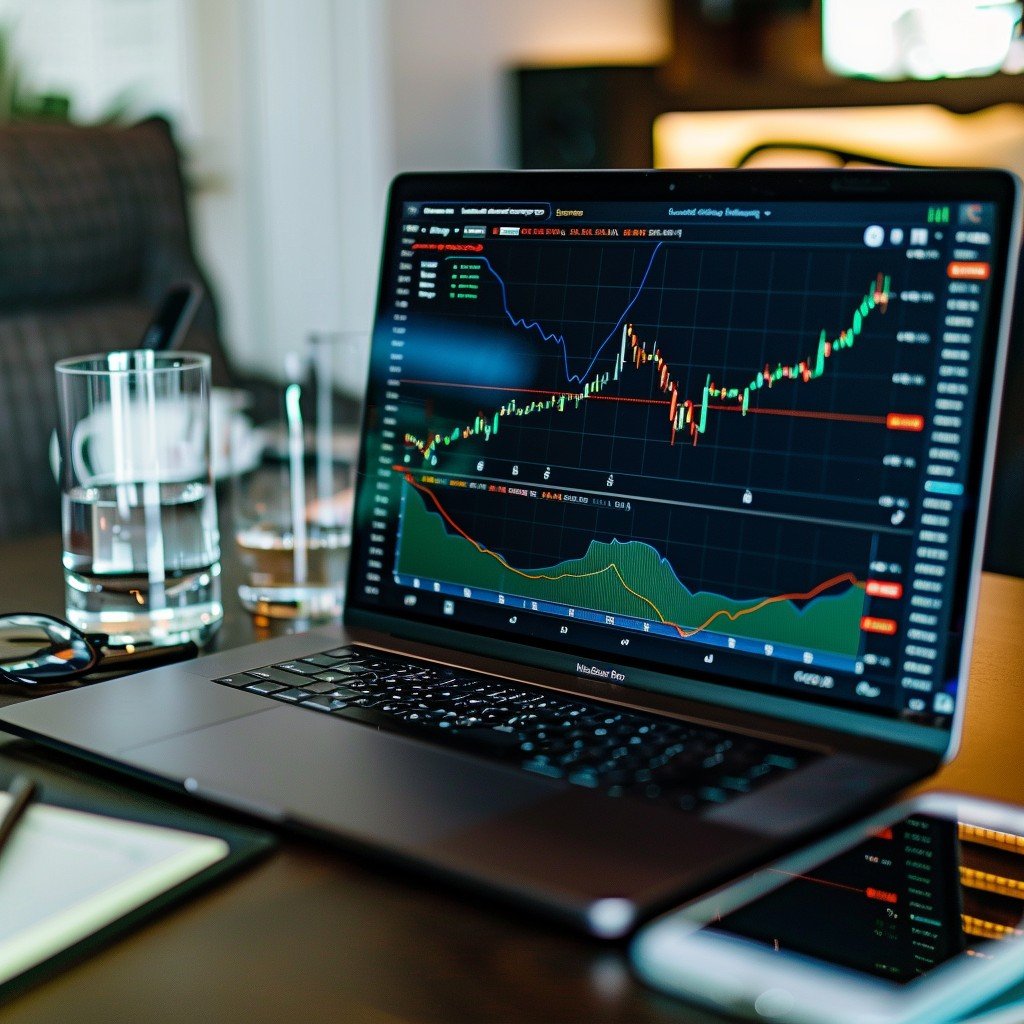
Candlestick Patterns: The Language of Price Action
Candlestick patterns are among the most powerful tools in a Forex trader’s arsenal. These patterns provide visual cues about market sentiment and potential price movements, making them essential for anyone looking to master technical analysis.
1. What Are Candlestick Patterns?
Candlestick patterns are formations created by the price movement of an asset within a specified time period. Each candlestick consists of a body and wicks (or shadows) that represent the opening, closing, high, and low prices. The body shows the difference between the opening and closing prices, while the wicks indicate the highest and lowest prices during the period.
2. Basic Candlestick Structure
- Bullish Candle: When the closing price is higher than the opening price, the body of the candle is typically colored green or white.
- Bearish Candle: When the closing price is lower than the opening price, the body is usually colored red or black.
- Wicks (Shadows): The thin lines above and below the body represent the highest and lowest prices during the period.
3. Key Candlestick Patterns to Know
- Doji: A Doji occurs when the opening and closing prices are nearly identical, forming a very small body. It signifies indecision in the market and can be a signal of a potential reversal, especially after a strong trend.
- Hammer: The Hammer has a small body at the top with a long lower wick, indicating that sellers pushed the price down during the session, but buyers managed to bring it back up. It’s a bullish reversal pattern, typically found at the bottom of a downtrend.
- Shooting Star: The Shooting Star is the opposite of the Hammer, with a small body at the bottom and a long upper wick. It’s a bearish reversal pattern found at the top of an uptrend, suggesting that buyers pushed the price up but sellers drove it back down.
- Engulfing Pattern: An Engulfing Pattern consists of two candles. In a Bullish Engulfing Pattern, a small bearish candle is followed by a large bullish candle that completely engulfs the previous candle’s body. This indicates strong buying momentum. A Bearish Engulfing Pattern is the opposite, signaling strong selling momentum.
- Morning Star and Evening Star: These are three-candle patterns that signal a reversal. The Morning Star is a bullish reversal pattern found at the bottom of a downtrend, consisting of a large bearish candle, a small-bodied candle, and a large bullish candle. The Evening Star is a bearish reversal pattern found at the top of an uptrend.
4. How to Use Candlestick Patterns in Trading Candlestick patterns are most effective when used in conjunction with other technical indicators and market context. Here’s how you can incorporate them into your trading strategy:
- Trend Confirmation: Use candlestick patterns to confirm the direction of a trend. For example, a Bullish Engulfing Pattern in an uptrend can signal that the trend is likely to continue.
- Reversal Signals: Identify potential reversal points by spotting patterns like the Hammer, Shooting Star, or Doji after a strong trend.
- Support and Resistance Levels: Combine candlestick patterns with support and resistance levels to enhance the accuracy of your trades. A pattern forming near these levels can provide a strong entry or exit signal.
5. Avoiding False Signals While candlestick patterns are powerful, they’re not foolproof. To avoid false signals, always consider the broader market context and combine candlestick analysis with other tools like moving averages, RSI, or Fibonacci retracement levels.
Conclusion
Candlestick patterns are the language of price action, offering insights into market sentiment and potential price movements. By mastering these patterns, you can enhance your trading strategy and make more informed decisions. Remember, the key to successful trading lies in combining candlestick patterns with other technical analysis tools and always considering the market context.
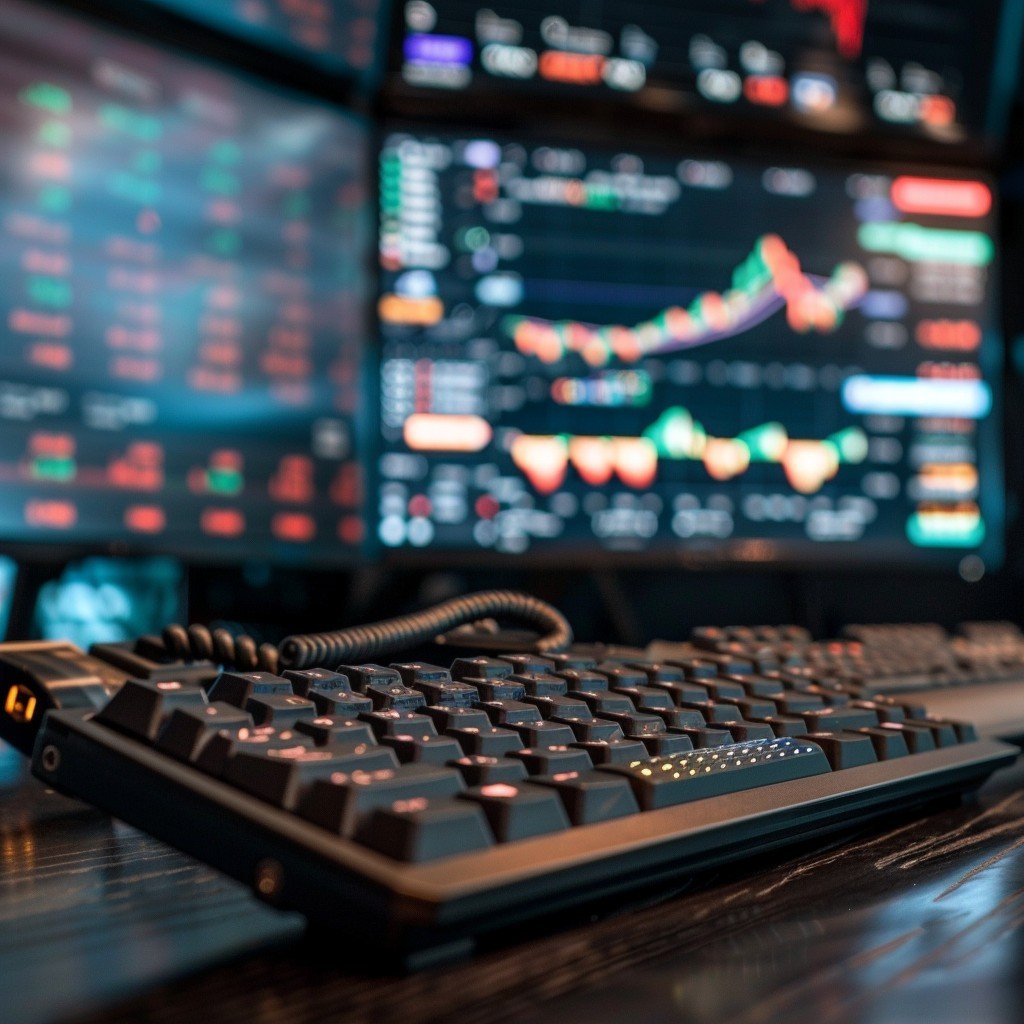
Introduction to Chart Patterns: Head and Shoulders, Double Top, and More
Chart patterns are fundamental tools in technical analysis, providing visual representations of market psychology. These patterns help traders predict future price movements by analyzing past price behavior. In this guide, we’ll explore some of the most common chart patterns and how you can use them in your Forex trading strategy.
1. What Are Chart Patterns?
Chart patterns are formations that occur on price charts as a result of the collective actions of buyers and sellers in the market. These patterns can indicate the continuation of a trend or signal a potential reversal, giving traders valuable insights into future price movements.
2. Major Types of Chart Patterns
- Reversal Patterns: These patterns suggest that the current trend is likely to reverse. Examples include:
- Head and Shoulders: This pattern consists of three peaks: a higher middle peak (the head) flanked by two lower peaks (the shoulders). It indicates a potential bearish reversal after an uptrend.
- Double Top and Double Bottom: A Double Top occurs after an uptrend and signals a bearish reversal. It features two peaks at a similar level, followed by a decline. A Double Bottom, on the other hand, occurs after a downtrend and signals a bullish reversal with two troughs at a similar level, followed by an increase.
- Continuation Patterns: These patterns indicate that the current trend is likely to continue. Examples include:
- Triangles: Triangles can be ascending, descending, or symmetrical. An Ascending Triangle forms during an uptrend and suggests a bullish continuation. A Descending Triangle forms during a downtrend and indicates a bearish continuation. A Symmetrical Triangle can signal a continuation of the existing trend after a period of consolidation.
- Flags and Pennants: Flags are small rectangles that slope against the prevailing trend, indicating a brief consolidation before the trend continues. Pennants are small symmetrical triangles that represent a pause in the trend before it resumes.
3. How to Trade Chart Patterns
- Identify the Pattern: The first step is to correctly identify the pattern on your chart. Make sure the pattern is well-formed and fits the criteria of the specific chart pattern you’re looking for.
- Confirm the Breakout: For most patterns, the trade signal occurs when the price breaks out of the pattern .
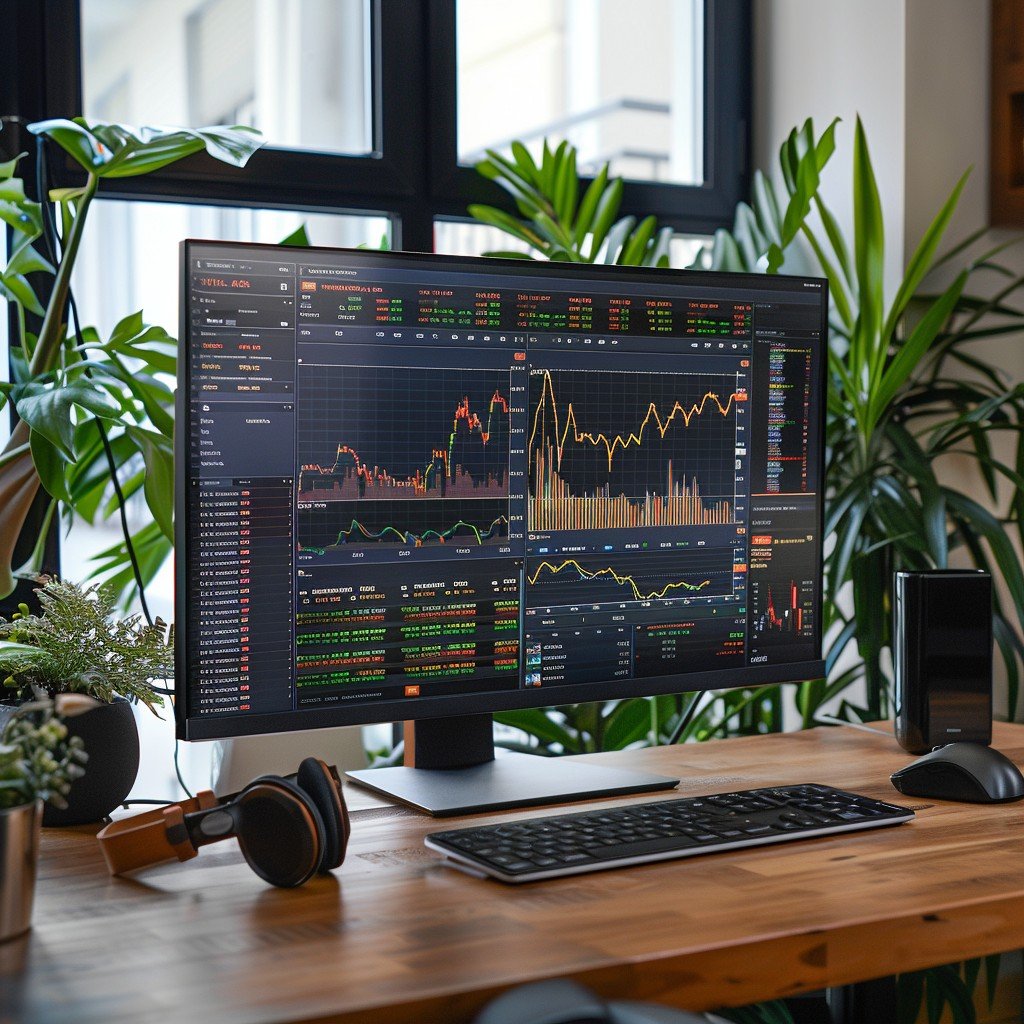
. Forex Market Sentiment: How to Read and Use It
Market sentiment refers to the overall mood or feeling of traders toward a particular market or asset. In Forex trading, understanding market sentiment is crucial because it helps traders gauge the direction in which the market may move, allowing them to make informed trading decisions.
1. What Is Market Sentiment?
Market sentiment is the collective attitude of traders and investors toward the financial market. It reflects how they feel about the current and future state of an asset or market, often driven by news, economic data, and global events. Sentiment can be bullish (positive) or bearish (negative).
2. Why Market Sentiment Matters
Sentiment can significantly impact price movements. For example, when traders are overwhelmingly bullish, prices often rise due to increased buying pressure. Conversely, when sentiment turns bearish, prices may fall as more traders sell. By understanding sentiment, you can anticipate potential market shifts before they happen.
3. Tools to Measure Market Sentiment
- Commitment of Traders (COT) Report: The COT report, published weekly by the U.S. Commodity Futures Trading Commission (CFTC), provides insights into the positions held by institutional traders and speculators. It helps traders identify whether the market is leaning toward bullish or bearish sentiment.
- Sentiment Indicators: Several online platforms provide sentiment indicators that show the percentage of traders who are long (buying) versus short (selling) on specific currency pairs. These indicators help you gauge whether the market is overly optimistic or pessimistic.
- News and Social Media: Monitoring news events and social media channels can give you a sense of the market’s sentiment. News such as geopolitical events, economic reports, or central bank announcements can shift sentiment rapidly, leading to price fluctuations.
4. How to Use Market Sentiment in Forex Trading
- Contrarian Trading: Contrarian traders often use sentiment as a signal to trade against the crowd. For example, if the majority of traders are bullish, a contrarian might look for signs of an impending reversal and take a short position.
- Following the Trend: If market sentiment aligns with a strong trend, you might choose to follow the crowd and trade in the direction of the prevailing sentiment. For example, if sentiment is overwhelmingly bullish and the market is in an uptrend, buying into that trend could be profitable.
- Confirmation of Other Analysis: Use sentiment to confirm technical or fundamental analysis. If both sentiment and technical indicators point in the same direction, it can strengthen your conviction in the trade.
5. Managing Risk with Sentiment Analysis
Market sentiment can change rapidly, and relying solely on it for trading decisions can be risky. Always combine sentiment analysis with other forms of analysis, such as technical or fundamental, to minimize risk. Additionally, use risk management tools like stop-loss orders to protect your trades in case of sudden shifts in sentiment.
Conclusion
Market sentiment is a powerful tool in Forex trading that can provide insights into the emotional and psychological drivers behind price movements. By learning how to read and use sentiment, you can better navigate the market, anticipate potential reversals, and make more informed trading decisions. Remember, sentiment should be used alongside other forms of analysis to achieve the best results.
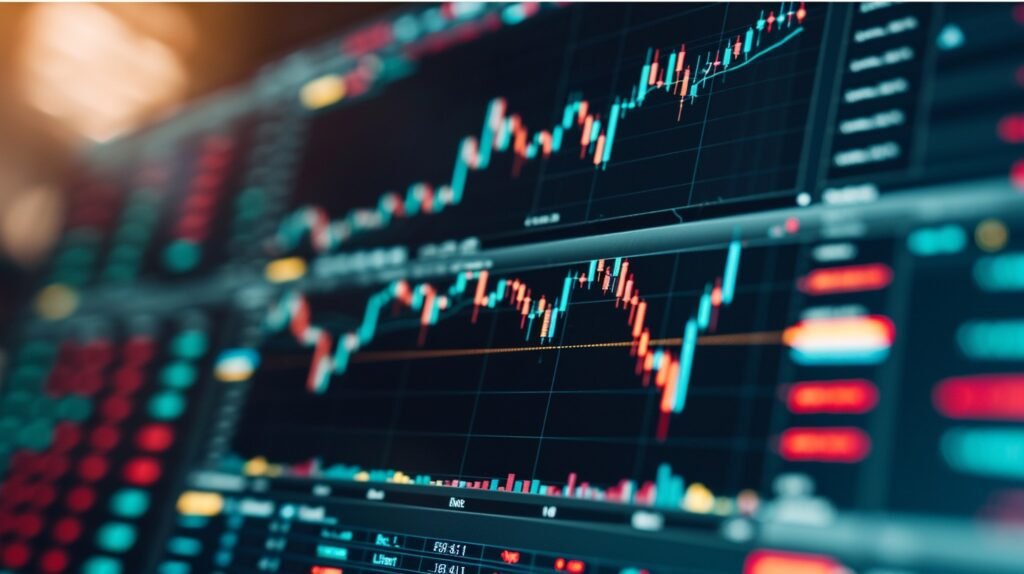
How to Develop a Winning Forex Trading Strategy
A solid Forex trading strategy is essential for long-term success in the market. A well-defined strategy helps traders navigate market fluctuations, minimize risk, and maximize profits. In this guide, we’ll walk you through the steps to develop a personalized Forex trading strategy that suits your trading style and objectives.
1. Set Clear Trading Goals
The first step in developing a winning Forex strategy is to establish clear goals. Ask yourself:
- What are your financial objectives (e.g., monthly returns, long-term growth)?
- How much time can you dedicate to trading each day or week?
- What is your risk tolerance (e.g., how much of your capital are you willing to risk on each trade)?
Defining your goals will help you choose the right approach and stay focused.
2. Choose a Trading Style
There are several trading styles to choose from, and your choice should depend on your goals, time commitment, and risk tolerance:
- Scalping: Involves making many small trades throughout the day, capturing small price movements. It requires constant attention and quick decision-making.
- Day Trading: Involves opening and closing trades within the same day, without holding positions overnight.
- Swing Trading: Involves holding trades for several days or weeks, aiming to capture larger price swings.
- Position Trading: Involves holding trades for months or even years, focusing on long-term trends.
Choose the style that best fits your personality and lifestyle.
3. Master Technical and Fundamental Analysis
A successful Forex strategy often combines both technical and fundamental analysis.
- Technical Analysis: Focuses on price charts, trends, and indicators to predict future price movements. You’ll need to familiarize yourself with tools like moving averages, Fibonacci retracements, and candlestick patterns.
- Fundamental Analysis: Involves analyzing economic data, interest rates, and geopolitical events that influence currency prices. By understanding macroeconomic factors, you can anticipate how these events might impact the Forex market.
4. Define Entry and Exit Rules
Your trading strategy should clearly define when to enter and exit a trade. Some factors to consider include:
- Entry Signals: What specific conditions or indicators must be met before you open a trade? For example, you might enter a trade when a currency pair breaks out of a key resistance level, or when the RSI (Relative Strength Index) hits an oversold level.
- Exit Rules: Establish when you will close a trade to secure profits or cut losses. Setting stop-loss and take-profit levels can help automate this process and reduce emotional decision-making.
5. Implement Risk Management
Risk management is key to long-term success in Forex trading. Some important principles include:
- Position Sizing: Determine how much capital you’ll risk on each trade. A common rule is to risk no more than 1-2% of your total account balance per trade.
- Stop-Loss Orders: Always use stop-loss orders to limit potential losses if the trade moves against you.
- Risk-to-Reward Ratio: Aim for a favorable risk-to-reward ratio (e.g., risking $1 to make $2 or more). This ensures that even if some trades result in losses, your profitable trades will more than make up for them.
6. Test and Optimize Your Strategy
Once you’ve developed your strategy, it’s essential to test it in a risk-free environment, such as a demo account. Track your performance over time and make adjustments if necessary. Pay attention to:
- Winning and losing streaks
- The effectiveness of your entry and exit rules
- Risk management strategies
Optimize your approach based on real-world results and be open to making continuous improvements.
Conclusion
Developing a winning Forex trading strategy requires careful planning, discipline, and continuous learning. By setting clear goals, choosing the right trading style, and implementing solid risk management, you’ll be better equipped to navigate the Forex market and achieve consistent success. Remember, the key to a sustainable trading career lies in testing, refining, and adapting your strategy as you gain experience.

The Role of Economic Indicators in Forex Trading
Economic indicators are critical tools for Forex traders as they provide insights into the economic health of a country, which in turn affects the value of its currency. By understanding these indicators, traders can anticipate market movements and make informed trading decisions.
1. What Are Economic Indicators?
Economic indicators are statistical reports that provide information about a country’s economic performance. These reports are typically released by government agencies or independent organizations at regular intervals. In Forex trading, they help traders gauge a country’s economic strength, influencing currency demand.
2. Key Economic Indicators in Forex Trading
- Gross Domestic Product (GDP):
GDP is the total value of goods and services produced within a country over a specific period. A rising GDP indicates economic growth, which generally strengthens the national currency. Conversely, a declining GDP signals economic weakness and can lead to a currency devaluation. - Inflation Rates:
Inflation measures the rate at which the general price level of goods and services is rising. Central banks often adjust interest rates to control inflation. Higher inflation may lead to higher interest rates, attracting foreign investment and boosting the currency. However, if inflation is too high, it could erode purchasing power and weaken the currency. - Interest Rates:
Interest rates set by central banks have a direct impact on currency value. Higher interest rates make a currency more attractive to investors because it offers better returns on investment. Conversely, lower interest rates may reduce the currency’s appeal. - Employment Data:
Employment reports, such as the U.S. Non-Farm Payrolls (NFP), provide insight into job creation and unemployment levels. Strong employment figures suggest economic stability and growth, which can positively influence a currency. Weak employment data may signal economic troubles, weakening the currency. - Trade Balance:
The trade balance measures the difference between a country’s exports and imports. A trade surplus (more exports than imports) tends to strengthen a currency, while a trade deficit (more imports than exports) can weaken it.
3. How Economic Indicators Affect Forex Markets
- Currency Strength:
Positive economic indicators often lead to a stronger currency, as they suggest a robust economy. For example, strong GDP growth or a low unemployment rate can boost investor confidence in a country’s currency, leading to an appreciation in its value. - Volatility:
Economic indicators often cause significant price volatility in the Forex market. Major reports like the U.S. Non-Farm Payrolls or central bank interest rate decisions can lead to sharp price movements, creating opportunities for traders to capitalize on short-term fluctuations.
4. Timing Is Key: Knowing When Indicators Are Released
To effectively use economic indicators, it’s crucial to know when they are released. Most economic indicators are published on a regular schedule (monthly, quarterly, or annually), and Forex traders keep a close eye on these releases using economic calendars. By knowing when key reports are due, traders can prepare for potential market reactions.
5. How to Trade Economic Indicators
- Trading the News:
Some traders specialize in “news trading,” where they open positions just before or after the release of a significant economic indicator. This strategy takes advantage of market volatility caused by the report. However, it requires quick decision-making and a solid understanding of how the market is likely to react. - Fundamental Analysis:
For long-term traders, economic indicators are a core part of fundamental analysis. By analyzing trends in GDP, inflation, and employment, traders can anticipate future interest rate decisions and other economic policies, helping them position themselves for long-term success.
Conclusion
Economic indicators play a vital role in Forex trading, providing traders with essential insights into a country’s economic performance and influencing currency values. By keeping track of key indicators such as GDP, inflation, and employment data, traders can make more informed decisions and take advantage of market movements. Whether you’re a short-term news trader or a long-term fundamental analyst, understanding how to interpret economic indicators is crucial for success in Forex.
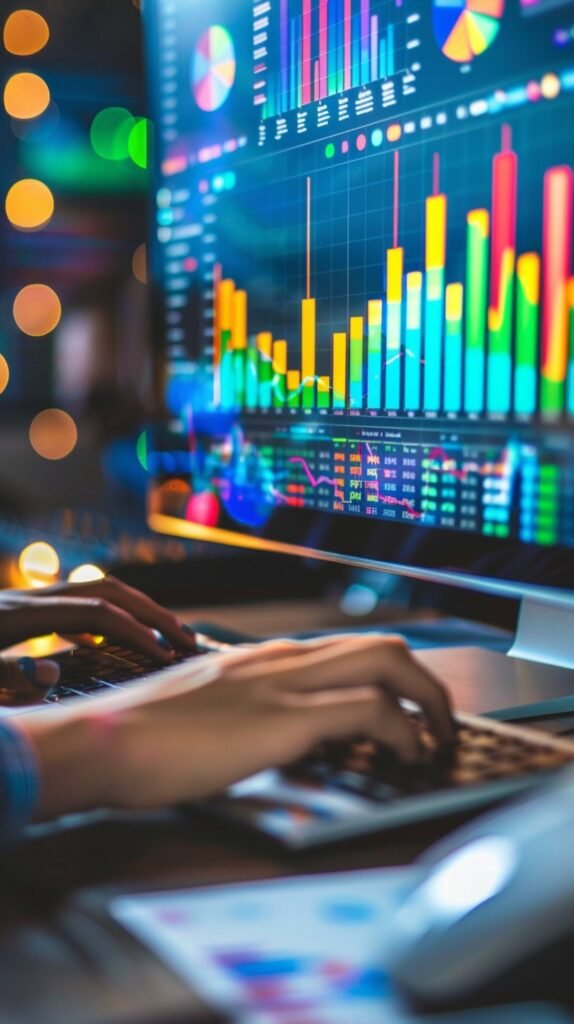
Forex Trading Psychology: Managing Emotions and Staying Disciplined
Mastering Forex trading isn’t just about understanding the market or having a solid strategy; it’s also about managing your emotions and maintaining discipline. Trading psychology can make or break your success in the market, as emotions like fear and greed can lead to irrational decisions.
1. The Role of Emotions in Trading
- Fear:
Fear can cause traders to make poor decisions, such as exiting a trade too early or hesitating to enter a trade. For example, a trader might fear that a losing position will worsen, causing them to exit prematurely, only to see the market turn around. - Greed:
Greed can lead to overtrading or holding onto a position too long in the hope of maximizing profits. This often results in missed profit opportunities or even significant losses. A common manifestation of greed is ignoring a set take-profit level in the hope that the market will keep moving in your favor. - Overconfidence:
Overconfidence often occurs after a string of successful trades, leading traders to take excessive risks. This can cause them to abandon their risk management rules, resulting in large losses when the market inevitably turns against them.
2. How to Stay Disciplined in Forex Trading
- Create a Trading Plan:
A well-defined trading plan helps you stay disciplined by outlining your strategy, entry and exit rules, and risk management guidelines. Stick to your plan, even when emotions try to pull you in a different direction. - Set Realistic Goals:
Setting achievable goals helps you manage your expectations and prevents emotional reactions to short-term market fluctuations. Focus on consistent, incremental gains rather than trying to “get rich quick.” - Use Stop-Loss Orders:
Stop-loss orders are essential for managing risk and controlling emotions. By setting a stop-loss level in advance, you can avoid making impulsive decisions in the heat of the moment. - Practice Patience:
Patience is a critical trait for successful traders. Avoid the temptation to chase the market or force trades that don’t align with your strategy. Wait for the right setups and trust your analysis.
3. Techniques for Managing Emotions
- Mindfulness and Meditation:
Practicing mindfulness or meditation can help you stay calm and focused during periods of market volatility. These techniques allow you to observe your emotions without letting them dictate your actions. - Journaling:
Keeping a trading journal is an excellent way to track your emotions and behavior during trades. By reviewing your journal, you can identify emotional triggers and work on minimizing their impact in future trades. - Stick to Your Risk Management Rules:
Always adhere to your risk management guidelines, including position sizing and setting stop-loss orders. Knowing that your risk is controlled can help reduce fear and anxiety.
4. How to Handle Losing Streaks
Losing streaks are inevitable in Forex trading, and how you handle them can determine your long-term success. To stay disciplined:
- Accept Losses as Part of the Process: Understand that losses are a natural part of trading and don’t let them affect your confidence.
- Reassess Your Strategy: If you encounter multiple losses, review your strategy to ensure it’s still effective in the current market conditions.
- Take a Break: If emotions are running high after a series of losses, step away from the market to regain your composure and return with a clear mind.
Conclusion
Managing emotions and staying disciplined are essential skills for successful Forex trading. By creating a solid trading plan, practicing mindfulness, and adhering to risk management rules, you can keep emotions in check and make more rational, informed decisions. Remember, trading is as much a psychological game as it is a technical one, so mastering your mindset is key to long-term success.

Tailored Solutions for Your Unique Vision
Lorem ipsum dolor sit amet, consectetur adipiscing elit. Donec congue lorem ut volutpat efficitur. Fusce justo magna, condimentum nec elementum sed, sollicitudin vitae enim. Vivamus sit amet metus porttitor, rhoncus nibh et, venenatis turpis. Etiam lobortis semper ante, quis luctus lacus tincidunt vel.
